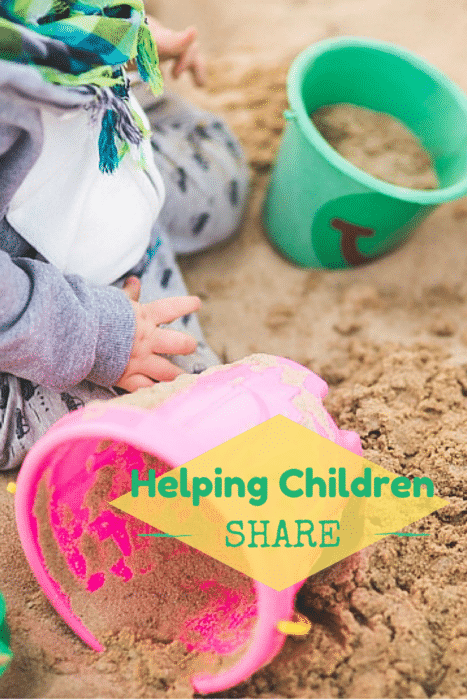My toddler has spent a lot of time in her first two years observing her older sister’s world of possessions. Though my older one, who is eight, is generally quite flexible these days about sharing her toys and other belongings with her sister, she has said the “M” word (“Mine!”) enough times for her younger sibling to take notice. So, sure enough, soon after words started rolling off my toddler’s tongue, she started saying it, aptly and strongly: “Mine, mine, mine!” Even things that are not actually hers (like her sister’s shoe this morning) are sometimes still “mine!”
 This tight hold on material items is not just the product of inadvertent modeling. Oftentimes, there’s tension behind the expression, a rigidity present. This is true when I observe the refusal to share in both of my daughters.
This tight hold on material items is not just the product of inadvertent modeling. Oftentimes, there’s tension behind the expression, a rigidity present. This is true when I observe the refusal to share in both of my daughters.
At Hand in Hand, we see the natural state of the child as easy-going, eager to cooperate, and, yes, willing to share. We human beings are built to connect with one another—in fact, our neurons are made to tune in with others’ neurons, all of the time—and we are wired to thrive and behave generously when interaction with others is optimal (i.e., warm, attentive, positive). There is a beautiful place of flexibility and cooperation that our children can operate from—this doesn’t have to be a fantasy! The catch is that, in order to regularly behave in this relaxed fashion, our children need to feel connected with us and safe, physically and emotionally.
When my older daughter’s “emotional cup” is filled, i.e. when her connection with me is strong, she is a dreamy big sister. She plays easily with her little sister, and the concept of “mine” versus “yours” does not seem to even cross her mind. But when she is feeling off—and this might be because of something that happened at school, or tiredness, or a feeling of disconnection from me—she is more likely to institute a pecking order in our household.
The same goes for my two year old. On the playground, as parallel play has recently shifted toward more interaction among peers in the sandbox and on the structures, she is far less likely to scream “Mine!” when someone goes for her shovel if she is feeling generally content and solidly connected with me.
So, when I notice things starting to go off the rails in my family, here are some things that I do:
- One-on-one time: This is always a great connection-boosting prescription. If I notice either one of my girls is consistently having a hard time sharing, I know it’s time for a connection infusion. We call this Special Time. If it’s my older one who could use this, I plan for a time when there will be another adult present to look after the younger one. When we’re ready to go, I’ll set the timer—maybe for 15 or 20 minutes—and ask my daughter, “What do you want to do?” And then I pour in all of my enthusiasm as I accompany her on any activity she has chosen. For my older daughter, who has experienced Special Time regularly since she was three years old, this connection time is usually the high-dosage vitamin she needs to get back to a grounded emotional place. (In fact, just this morning, she woke up mad at me due to a limit I had set last night, and a spontaneous 15-minute Special Time at 6:30 a.m. was all we needed to get our relationship back to a good-feeling place.)
- Listen to the tough spots: Sometimes underneath those grabby hands is a rigid layer of hurts—deep ones all balled up inside. These unresolved emotional sore spots could be from anything big or seemingly little, from earlier in the day or from years ago. They might include hurts from other times when things didn’t go the child’s way—after all, our little ones are living in an adults’ world, where they don’t get to call the shots all that often. When those hurt feelings bubble up, by way of screaming or crying, it’s time to scoot in close and listen to the tears and other feelings. One mom relayed how she helped her son, who was having a hard time sharing in daycare, by setting limits and then patiently and supportively listening.
- Play: When I hear “mine!” a lot in my house, it makes the feeling of divisiveness palpable. To me, this is always a sign that we need to get back on track toward harmony. A sure-fire way to get my kids to come together is to yell out these two words: “Pillow fight!” We all run to my and my husband’s bed, and start throwing pillows around and at each other. Inevitably, both girls ask for “horsey” and airplane rides, too, and we also play other games they’ve made up. During these times, the two are always happily sharing—in mommy’s full attention and in good fun.
 – Susan Derby is a Parenting by Connection Instructor based in Los Angeles, California. You can connect with Susan via email, or through her Facebook page.
– Susan Derby is a Parenting by Connection Instructor based in Los Angeles, California. You can connect with Susan via email, or through her Facebook page.